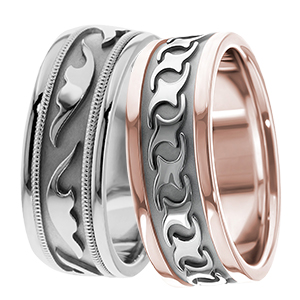- 800-275-1257 ×
-
ALL DEPARTMENTS
 WEDDING BANDS
WEDDING BANDS ENGAGEMENT RINGS
ENGAGEMENT RINGS DIAMOND RINGS
DIAMOND RINGSJEWELRY & GIFTS
- MY ACCOUNT Hello. Sign In
- CONTACT US
- Price Match Guarantee

Platinum is a metallic element with the atomic number 78 and the symbol Pt. On the periodic table of elements, it is found in Group 10 and in Period 6 between iridium and gold. It is referred to as a “transition metal.” It is also one of the “platinum metals,” along with iridium, osmium, palladium, rhodium, and ruthenium. Platinum is a malleable, ductile element. Described as grayish-white in color, its name comes from the Spanish platina, which means “little silver.”
Platinum is one of the so-called precious metals, along with gold and silver. Although known and used in South America by pre-Columbian Native Americans, its first mention in European literature was probably the oblique reference to a metal found between Mexico and Darién in 1557 by Julius Caesar Scaliger, a French scholar of Italian background. It was further documented in the 1730's by Spaniard Antonio de Ulloa, an astronomer with a French expedition to Peru. Usually found mixed with other metals, including iridium, nickel, or osmium, or more rarely, arsenic or sulfur, platinum occurs worldwide, but is primarily mined in Canada, Columbia, Peru, Russia, and South Africa. About 30 tons (27.2 metric tons) per year are produced. Iridium may be added to form an alloy.
Although many people many know platinum for its use in jewelry — which is how over 90 percent of it is used, platinum has a number of other uses. It is used in electroplating, as a catalyst in catalytic converters for automobiles, in the making of crucibles, in dental crowns, and — combined with cobalt — to make magnets. In jewelry, typically 5% other metals are added to the platinum to make an alloy soft enough to set precious stones securely in the jewelry settings. Special uses include the production of standard weights and measures—the international standard for the kilogram is 90 percent platinum, and the Standard Hydrogen Electrode definition also includes platinum. In medical settings, it is used in making dental crowns, surgical pins, and surgical tools, as well as being employed as an anti-tumor agent.
Platinum is rare, the coveted treasure of discerning individuals. There is very little platinum on this earth and it is found in very few places around the world. This exquisite metal is 30 times rarer than gold. In fact, it is estimated that if all the platinum in the world were poured into one Olympic swimming pool it would be scarcely deep enough to cover your ankles. Gold would fill more than three pools. Platinum's rarity makes it exclusive and distinctive - a celebration of your individuality.
Platinum is pure, an expression of integrity, a reflection of inner truth. Platinum's purity endows it with a brilliant white luster. This helps to reflect the true radiance of diamonds. Because it is generally 95% pure (18 karat gold is 75% pure), platinum jewelry does not fade or tarnish and keeps its looks for a lifetime. Platinum's purity makes it hypoallergenic and ideal for those with sensitive skin.
Platinum jewelry is the perfect choice for a lifetime of everyday wear. Its density and weight make it more durable than other jewelry metals. Platinum does not wear away and holds precious stones firmly and securely. Like all precious metals, platinum scratches. However, the scratch on a platinum piece is merely a displacement of the metal and none of its volume is lost. So, even though wearing it each and every day may leave an impression on the surface, it remains what it was - a symbol for all things eternal.
In addition to its strength and density, platinum has another remarkable quality - pliability. Platinum is so pliable, that just one gram of the metal can be drawn to produce a fine wire over one mile (almost 2 km) long. This quality has enabled jewelers to create some amazing versatile platinum mesh accessories, which could not be fashioned from other precious metals. Platinum is also in demand in other fields - it is used in industry, most notably in catalytic converters. Platinum also plays an important role in medicine. It is not affected by the oxidizing reaction of blood, has excellent conductivity, and is compatible with living tissue. Because of these properties, platinum is used for pacemakers. At present, more than 50,000 people are living healthily on pacemakers. Platinum is a life-saving metal for these people.